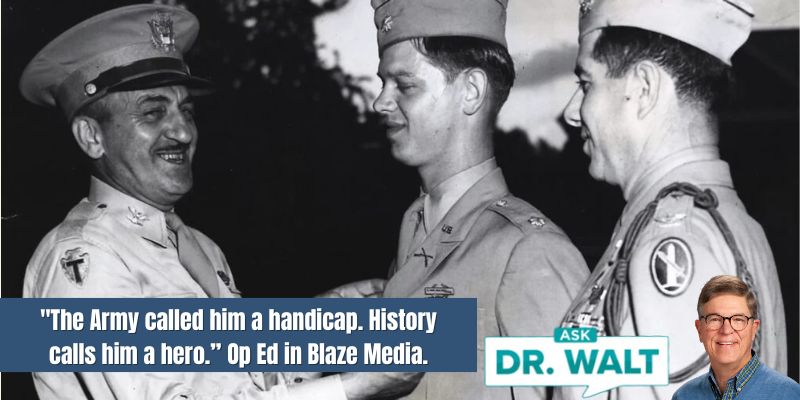
August 5, 1944 — Phil writes home, “Please leave the Vienna sausage out from now on!”
August 5, 2024
“Ask Dr. Walt” in Today’s Christian Living “Laughter is the Best Medicine” (Part 1)
August 7, 2024VI Corps was moved from Lt. General Mark Clark’s Fifth Army to Lt General Alexander “Sandy” Patch’s Seventh Army, which was to lead the upcoming amphibious operation in southern France.[1]

Winston Churchill later wrote:
The Seventh Army, under General Patch, had been formed to carry out the attack. It consisted of seven French and three U.S. divisions, together with a mixed American and British airborne division. The three American divisions comprised General Truscott’s VIth Corps, which had formed an important part of General Clark’s Fifth Army in Italy. In addition, up to four French divisions and a considerable part of the Allied air forces were withdrawn from Alexander’s command.
The new expedition was mounted from both Italy and North Africa, Naples, Taranto, Brindisi, and Oran being used as the chief loading-ports. Great preparations have been made throughout the year to convert Corsica into an advanced airbase and to use Ajacioas a staging-port for a landing craft proceeding to the assault from Italy.
Landing-craft restricted the first seaborne landing to three divisions, and the more experienced Americans led the van. Shore defences all along the coast were strong, but the enemy were weak in numbers and some were of poor quality. In June there have been fourteen German divisions in southern France, but four of these were drawn away to the fighting in Normandy, and no more than ten remained to guard the 200 miles of coastline. Only three of these lay near the beaches on which we landed.
The enemy were also short of aircraft. Against our total of 5000 in the Mediterranean, of which 2000 were based in Corsica and Sardinia, they could muster a bare two hundred, and these were malt in the days before the invasion. In the midst of the Germans in southern France over 25,000 armed men of the Resistance were ready to revolt. We had sent them their weapons, and, as in so many other parts of France, they have been organised by some of that devoted band of men and women trained in Britain for the purpose during the past three years.[2]
~~~~~
For Phil’s 3rd Battalion, 30th Infantry, 3rd Division, this would be their seventh amphibious assault, but their first D-Day to be carried out during daylight hours.
This time the target area was the French Riviera. Further north in the Normandy region, the American and British forces were encountering stiff resistance during the Battle of the Falaise Pocket.
According to military planners, the invasion of southern France would clear out the enemy forces guarding the approaches into France from the south. Once their invasion succeeded, they would push northward and link up with the Allied troops coming out of Normandy. Together, they would form one combined “broad front” and drive the Nazi forces back toward and across the German border.[1]
~~~~~
On August 6, Lt General Alexander M. Patch, Commander of the 7th Army, reviewed the 3rd Division and pronounced it “ready to go.”[3]
On August 6, training was over, and we were loaded onto an LCT (landing craft transport), which proceeded to sit in the harbor for three days. Everyone was so bored, the officers decided we needed to get off and take a hike each morning. Some of the boys took watermelons from the Italians, and man, were they good.[4]
~~~~~
[1] Larimore, At First Light, 117-118
[2] Churchill, The Second World War, 96, 98-66.
[3] Champagne, 74.
[4] Hartstern, 34.
In case you haven’t read or listened to Dad’s book, you can learn more or order it here.
© Copyright WLL, INC. 2024.




